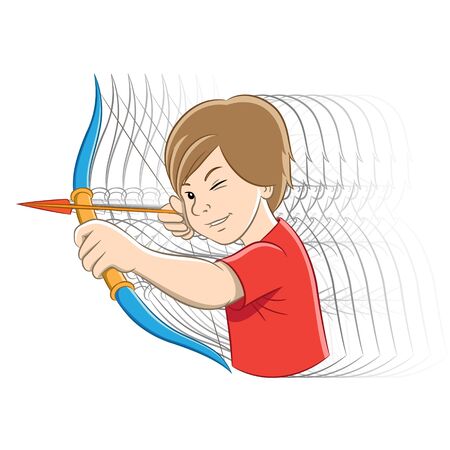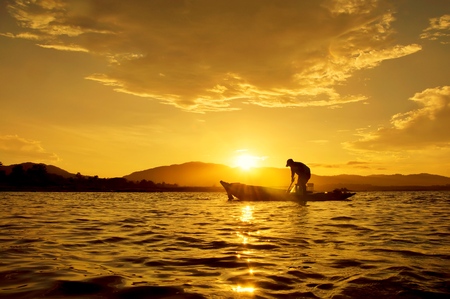Understanding Fall Fish Behavior
To become a successful angler in the fall, its important to first understand how fish behavior changes during this season. As summer fades and temperatures begin to drop, fish start preparing for winter. This transition affects where they move, how often they feed, and what kind of bait theyll strike.
Feeding Patterns in the Fall
During fall, fish increase their feeding activity to build up fat reserves before winter sets in. This is especially true for species like bass, walleye, and trout. They become more aggressive and are more likely to chase baitfish or strike lures. The key is to match the hatch—use bait that mimics local forage fish like shad or minnows.
Common Fall Forage Fish
| Forage Fish | Popular Game Fish That Feed on Them |
|---|---|
| Shad | Bass, Crappie, Catfish |
| Minnows | Trout, Walleye, Panfish |
| Bluegill | Largemouth Bass, Pike |
Water Temperature Changes
As the air cools down, surface water temperatures begin to drop too. This triggers a mixing process in lakes known as “fall turnover,” where cooler surface water sinks and mixes with warmer bottom layers. This equalizes oxygen levels throughout the water column and allows fish to spread out across different depths.
Water Temperature Effects on Fish Activity
| Water Temperature (°F) | Fish Activity Level | Recommended Fishing Depth |
|---|---|---|
| 70-60°F | High – Active Feeding | Shallow to Mid-depth (5–15 ft) |
| 59-50°F | Moderate – Slowing Down Slightly | Mid-depth (10–20 ft) |
| <50°F | Low – Less Active Feeding | Deeper Water (15+ ft) |
Migration Tendencies of Fish in Fall
Many species migrate during the fall in search of optimal feeding grounds or better oxygen levels. For example, largemouth bass may move from deep summer haunts into shallower coves where baitfish are schooling. Similarly, trout often move upstream in rivers to spawn or find colder waters.
Quick Tips:
- Bass: Look near creek mouths and shallow flats with cover.
- Walleye: Target points and drop-offs near river channels.
- Panfish: Check weed edges and submerged structures.
By understanding these behavioral changes in fish during the fall months, you’ll be better prepared to adapt your techniques and increase your chances of landing that trophy catch.
2. Choosing the Right Lures and Baits
Fall fishing calls for a smart selection of lures and baits that match the behavior of fish as they prepare for winter. Water temperatures are dropping, and many game fish like bass, walleye, and pike become more aggressive, feeding heavily before the cold fully sets in. Knowing what to throw and when can make all the difference on the water.
Best Artificial Lures for Fall
During fall, fish respond well to lures that mimic injured or fleeing baitfish. Here are some top choices:
| Lure Type | Best For | Why It Works in Fall |
|---|---|---|
| Crankbaits | Bass, Walleye | Mimic baitfish; great for covering water quickly in cooler temps |
| Jerkbaits | Bass, Pike | Erratic action triggers reaction strikes from aggressive predators |
| Spinnerbaits | Bass, Northern Pike | The flash and vibration attract attention in stained or moving water |
| Spoons | Trout, Salmon, Pike | Imitate dying baitfish; ideal for deeper water presentations |
| Topwater Lures (early fall) | Bass | Still effective during warmer fall days when fish feed near the surface |
Effective Natural Baits for Fall Fishing
If youre leaning toward natural baits, fall is a great time to use live offerings. Fish are hungry and more likely to go after an easy meal.
| Bait Type | Target Species | Advantages in Fall Fishing |
|---|---|---|
| Live Minnows | Bass, Crappie, Walleye | Mimic natural prey; irresistible to most predatory fish during fall feed-ups |
| Nightcrawlers | Panfish, Walleye, Catfish | A classic bait that works well when fished slowly along the bottom as temps drop |
| Crawfish (live or imitation) | Bass, Smallmouth Bass | Crawfish are active until late fall; perfect for rocky or gravel bottoms where bass hunt them down |
| Cut Bait (like shad or herring) | Catfish, Pike, Striped Bass | The scent trail is powerful in cooler water and attracts larger predator fish looking for an easy meal |
Tips for Matching Your Bait to Conditions
Water Clarity Matters:
In clear water, go with natural colors like silver, white, or shad-patterned lures. In stained or muddy water, brighter colors like chartreuse or fire tiger can help your bait stand out.
Temperature Considerations:
The colder it gets, the slower your presentation should be. Fish become less willing to chase fast-moving baits as temperatures drop.
Dont Be Afraid to Upsize:
Fish are bulking up before winter. Larger baits can often entice bigger bites during this season.
Pro Tip:
If youre unsure which lure to start with, tie on a medium-diving crankbait that mimics local baitfish. It’s a solid all-around choice that performs well across many fall conditions.
Selecting the right lures and baits tailored to fall behavior patterns will drastically improve your chances of landing more—and bigger—fish this season.

3. Mastering the Art of Slow Retrieval
As the temperature drops in the fall, fish metabolism slows down—and that means your retrieve should too. Unlike the warmer months when fast-moving lures trigger reaction strikes, fall fishing requires a more methodical and patient approach. Learning how to slow down your presentation can make all the difference between getting skunked or landing a trophy.
Why Slowing Down Works
In cooler water, fish become less aggressive and their feeding windows shrink. Theyre not as willing to chase fast-moving bait, so a slow retrieve mimics injured or easy prey—making it irresistible to sluggish predators. Whether youre targeting bass, walleye, or pike, adjusting your speed is one of the most effective fall techniques.
Best Lure Types for Slow Retrieval
| Lure Type | Why It Works in Fall | Tips for Use |
|---|---|---|
| Jigs | Mimic dying baitfish and bottom feeders | Use a lift-and-drop motion with long pauses |
| Soft Plastics (worms, craws) | Natural movement at slow speeds | Texas-rigged or drop shot works great on lethargic fish |
| Suspending Jerkbaits | Stay in strike zone longer during pauses | Twitch slowly with long pauses between jerks |
| Spoons | Flashy flutter action mimics wounded baitfish | Let sink and retrieve slowly with occasional lifts |
Slow Retrieval Techniques by Water Type
Lakes and Reservoirs
Focus on deeper structure like submerged trees, ledges, and drop-offs. Fish often suspend near these areas in cooler water. Use vertical jigging or slow-dragging techniques along the bottom.
Rivers and Streams
Target slower current areas like eddies, backwaters, or behind rocks where fish conserve energy. Cast upstream and let your lure drift naturally before retrieving slowly through holding zones.
Pro Tip:
If you think youre retrieving too slow—go even slower! Sometimes just letting a bait sit still for several seconds can be enough to trigger a bite from a finicky fall fish.
Slowing things down may test your patience, but once you hook into a big fall bass or walleye using this technique, youll understand why its one of the most important skills any angler can master during autumn.
4. Targeting Specific Species in the Fall
Fall is one of the best times of year to target popular game fish like bass, walleye, and trout. As water temperatures drop, these species change their behavior and feeding patterns, making it essential to adapt your techniques to match. Heres how to dial in your approach for each.
Bass
During autumn, both largemouth and smallmouth bass become more aggressive as they prepare for winter. They feed heavily on baitfish like shad and bluegill. Look for them near points, drop-offs, and around submerged structures.
Best Techniques:
- Crankbaits: Use shallow to medium-diving crankbaits that mimic baitfish.
- Spinnerbaits: Great for covering water quickly and triggering reaction bites.
- Jigs: Use football jigs with craw trailers near rocky bottoms or structure.
Walleye
Walleye are known for their fall feeding frenzies, especially in low-light conditions. As they move toward deeper waters, focus on main lake points and river channels.
Best Techniques:
- Jigging: Vertical jigging with live minnows or soft plastics works great near drop-offs.
- Trolling: Use crankbaits or worm harnesses at varying depths to find active fish.
- Slip Bobbers: Ideal for fishing live bait near structure or weed lines.
Trout
In fall, trout—especially browns—become more active as water cools and spawning begins. Streams and rivers are key areas to focus on during this season.
Best Techniques:
- Fly Fishing: Use streamers and nymphs that imitate aquatic insects or smaller fish.
- Spoons & Spinners: Great for covering water and attracting strikes from aggressive trout.
- Bait Fishing: Natural baits like worms or salmon eggs can be very effective in slower pools.
Quick Reference Table
| Species | Best Locations | Top Techniques |
|---|---|---|
| Bass | Points, drop-offs, structure | Crankbaits, spinnerbaits, jigs |
| Walleye | Main lake points, river channels | Trolling, jigging, slip bobbers |
| Trout | Streams, rivers, cool lakes | Fly fishing, spoons/spinners, bait fishing |
The key to successful fall fishing is understanding how each species behaves as the seasons change. By tailoring your tactics to match their habits, youll put yourself in the best position to land more fish this autumn.
5. Locating Productive Fall Fishing Spots
Finding the right fishing spots in the fall can make all the difference between a slow day and a full livewell. As temperatures drop, fish start feeding more aggressively to prepare for winter. Knowing where they hang out during this seasonal transition is key to success.
Focus on These Key Areas
During fall, fish tend to move from their deep summer haunts to areas where food is plentiful and water conditions are ideal. Here are three top locations to target:
| Location | Why It’s Productive |
|---|---|
| Drop-offs | These underwater ledges offer quick access to both shallow and deep water, making them perfect ambush points for predatory fish like bass and walleye. |
| Weed Lines | As weeds begin to die off, baitfish gather around the remaining green vegetation. Game fish follow, making these edges prime spots. |
| Shallow Flats | On warmer fall days, sunlight warms up shallow flats quickly. This attracts baitfish and, in turn, larger fish looking for an easy meal. |
Use Electronics and Maps
If youre fishing from a boat, use your fish finder or sonar to locate structure changes and baitfish schools near these areas. Topographic lake maps—either digital or printed—can also help identify potential drop-offs or flat zones before you even hit the water.
Pro Tip:
If youre bank fishing, look for visible signs like ripples on the surface, diving birds, or points where weed beds meet open water. These natural indicators often reveal active feeding zones.
Match Your Tactics to the Spot
Once youve identified a good location, adjust your techniques accordingly. For example:
| Spot | Recommended Technique |
|---|---|
| Drop-offs | Try vertical jigging or drop shot rigs near the edge of the drop-off. |
| Weed Lines | Use weedless lures like Texas-rigged plastics or spinnerbaits along the edge. |
| Shallow Flats | Casting crankbaits or topwater lures can be very effective here, especially during early morning or late afternoon. |
The more time you spend learning how fish behave in different parts of your local waters during fall, the better youll get at predicting where theyll be. Combine that knowledge with some patience and the right technique, and youll be reeling them in all season long.


